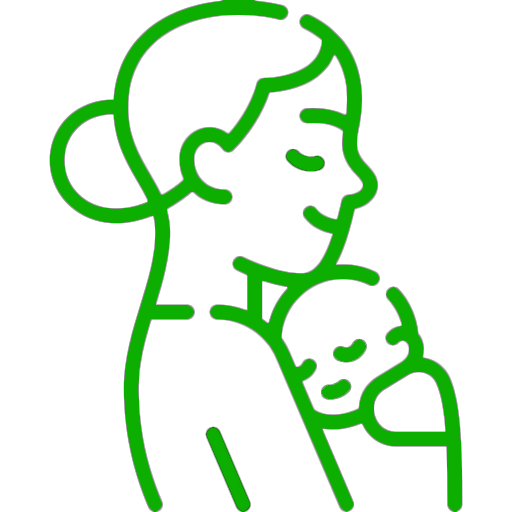You’ve certainly heard the term “tummy time” as a parent of a newborn and assumed it was just a simple fun activity with your baby. Yes, it is, but it is also an opportunity to assist your baby gain strength and motor skills.

Continue reading to learn more about the benefits of tummy time, how to give your baby tummy time, and how to make tummy time entertaining for your child.
What Is Tummy Time?
Tummy time for your baby entails placing your wide-awake baby on her stomach for brief periods of time while you attentively monitor her. This activity is beneficial to your baby’s growth because it strengthens the neck and shoulder muscles while also improving motor abilities.
Just keep in mind that your infant should always be supervised during tummy time.
What Are the Benefits of Tummy Time?
Giving your infant tummy time every day has a number of advantages:
Encourages physical growth. Tummy time improves your baby’s neck, arms, back, and legs, as well as her flexibility and muscle control. Her motor abilities and strength will be required for rolling over and sitting, followed by crawling and walking.
Gives you a new perspective on the world. It allows your baby to examine and explore her surroundings in a different way than when she is on her back. She had to lift her head to look around while lying on her stomach. This not only strengthens her back and neck muscles, but also provides her with a fresh perspective on the world.
Torticollis is relieved and the flat head syndrome is avoided. Tummy time can help babies with torticollis, a disorder that causes tight muscles in the neck. Tummy time, coupled with exercises advised by a healthcare expert, can aid in the relaxation of a baby’s tight neck muscles. Spending time on her tummy while she is awake can also help prevent flat areas on the back of your baby’s head, a condition known as a flat head syndrome.
It adds new textures. It exposes your baby to various textures when the skin on various regions of her body makes contact with the surface she is on.
When to Start Tummy Time?
Tummy time sessions can begin while you and your newborn are still in the hospital or as soon as your newborn is discharged.
It’s best to begin early so your infant can become used to the action. Remember that when you start performing tummy time, you don’t need to be concerned about the umbilical cord stump—it will be OK.
To begin at this early stage, place your baby on your chest or stomach while seated in a chair, on a bed, or on the floor. Take advantage of this time to interact with your infant by making lots of eye contact, talking animatedly, and making exaggerated facial gestures. This is an excellent way to bond with your new child!
How to Do Tummy Time
Tummy time for infants and older babies may differ slightly. Continue reading to learn more about the unique tummy time practices.
Tummy Time for Newborns
Because your baby is only starting to acquire head and neck control, follow these suggestions for tummy time for babies aged 0 to 3 months:
- While your newborn is awake, place her belly-down on your chest or on your lap.
2. Interact with her by staring into her eyes, giving her a bright grin, and speaking to her in a pleasant sing-song voice to make her feel more at ease.
3. Keep tummy time to three to five minutes at a time at this period. As you see her enjoying the action, gradually lengthen it. Allow your child two to three times each day for tummy time. Following a diaper change or sleep could be an excellent time for it.
Even if your baby has more control over her head and stronger neck muscles by the end of the first month, you should still support her head when you hold her. She won’t be able to stand on her own until she’s about 4 months old.
Tummy Time for Older Babies
When your older baby is 4 to 7 months old, follow these steps to give her tummy time:
- Place your baby belly-down on a blanket, towel, or play mat-covered area of the floor.
2. Get on the floor with her and interact with her by dangling a toy in front of her.
3. Provide three to five minutes of tummy time at a time, gradually increasing in duration as you see her enjoying the activity. Tummy time can be done two or three times each day, sometimes after a diaper change or feeding.
Your baby will most likely be able to fully lift her head when on her belly at this stage, and she may also begin to push up on her arms, arch her back, and lift her chest. This newly acquired upper body strength will help her finally sit up.
When she’s on her stomach, you might observe her rocking, kicking her legs, or “swimming” with her arms. This is common around 5 months and signals that she is gaining the strength and skills required to roll over and possibly crawl.
How Often Should You Do Tummy Time?
Tummy time should be done two to three times every day. As your infant becomes accustomed to this exercise, you can repeat it more regularly or for longer periods of time.
Where Is the Best Place to Do Tummy Time?
You can begin tummy time with your infant on your own belly or lap when he or she is a newborn (from 0 to 3 months).
Tummy time is best done later on a low, safe surface, such as a clean floor or a floor spread with a play mat or a blanket. Just make sure the blanket doesn’t move while your baby moves.
You might be wondering if you can do tummy time on something else. Tummy time should not be done on a sofa, bed, or any other high or soft surface. These locations can put your infant at risk of suffocating or accidentally sliding off and falling. Avoid doing tummy time on pillows and other soft surfaces.
Ways to Turn Tummy Time Into Play Time
Tummy time is a terrific time to interact with your baby. Here are four suggestions:
- Place a favourite toy just out of reach of your infant and encourage him to reach for it. Instead of a toy, you may sit low and just out of reach of your baby, allowing him to lift his head and reach for your face.
2. Place toys in various locations around your infant. This will push him to reach for the various spots, which will help him build the muscles he will need to turn over, scoot, and eventually crawl.
3. Instead of putting your baby on a surface for tummy time, put him or her on your lap or chest. This is especially important for newborns up to three months old. Lift and drop your legs at the same moment while holding your baby on your lap; then, for a variety, move your infant side to side. Your baby will try to lift his head and arms to look at you while lying on your chest. Keep chatting to your baby throughout these tummy time sessions to comfort and encourage him.
4. Play with your baby during tummy time if you have a toddler or young child in the house. This can be an excellent time for siblings to bond.
What If Your Baby Hates Tummy Time?
Your baby may dislike being on his tummy at first because it is a new position for him.
Here are a few ideas to get you started:
- Keep a colourful item within his grasp so he can keep his focus.
2. Get down on the floor in front of him and engage him with a toy or by singing to him.
3. If he still isn’t having a good time, have someone else try to entertain him.
4. Try lying on your side. You place your baby on his side for this type of tummy time. If necessary, roll up a towel to support his back and fold a clean washcloth to place under his head. Your baby’s arms should be out in front, his legs should be front at his hips, and his knees should be bent. In this manner, your baby may favour tummy time.
Your kid will eventually get the hang of this new activity and may even enjoy it. If you are concerned that your baby is not enjoying tummy time, consult with your baby’s healthcare practitioner.
This page is based on professional advice from reputable medical and government organizations, such as the American Academy of Pediatrics and the American College of Obstetricians and Gynecologists. This page’s material should not be used in place of professional medical advice. For a complete diagnosis and treatment, always seek the advice of a medical expert.














Leave a Reply
View Comments